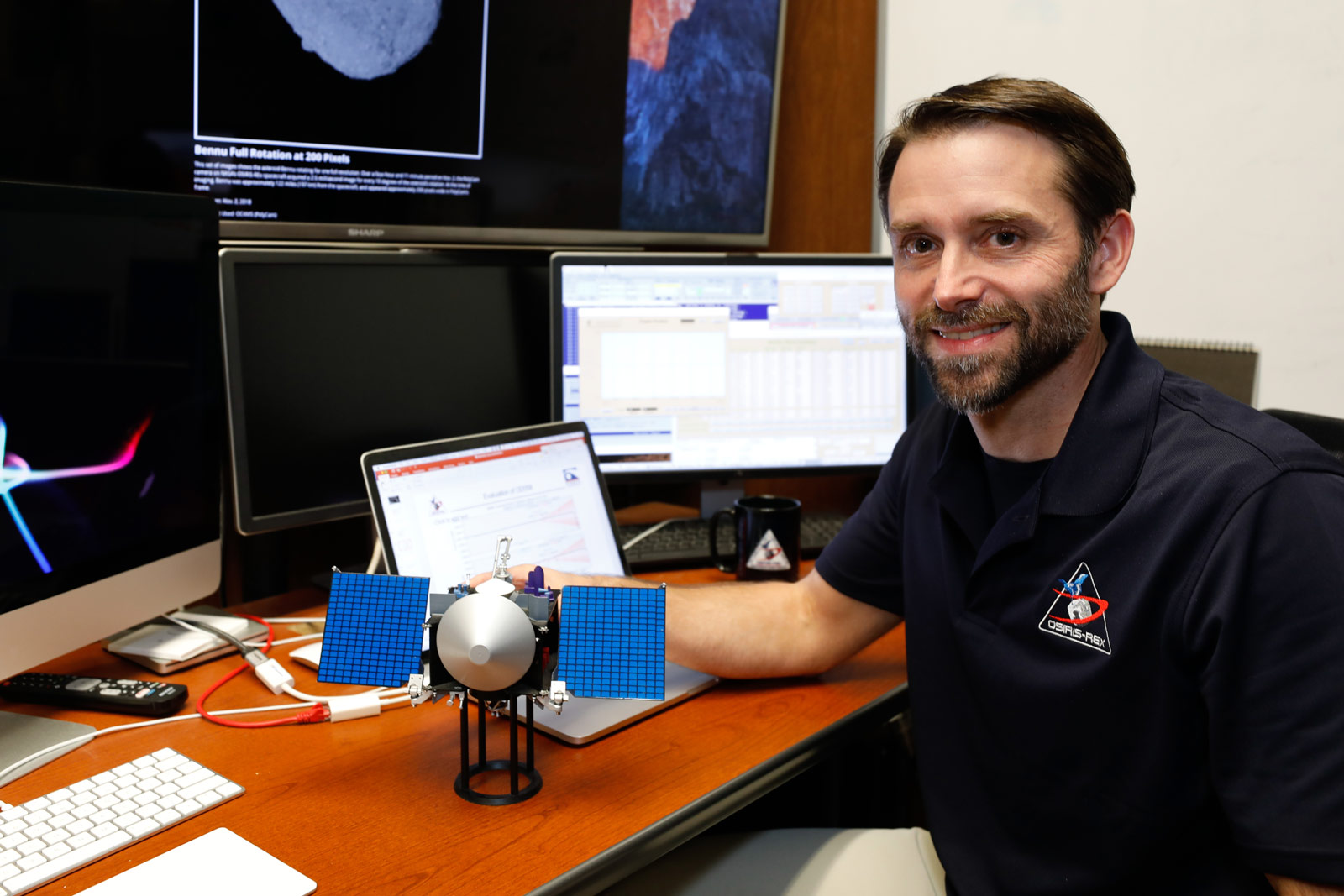
Mike Moreau
Flight Dynamics System Manager - NASA’s Goddard Space Flight Center
University of Colorado at Boulder
Aerospace Engineering
This short Q&A was featured in a Nov. 19, 2018 article introducing a selection of people who work on the OSIRIS-REx mission to explore asteroid Bennu.
Expertise: Mechanical and Aerospace Engineering
Hometown: Swanton, Vermont
The flight dynamics system is the element of the ground system that does all of the navigation and mission design. We usually call ourselves the navigation team, and I’m responsible for that team of about 24 people, though they don’t all work full time on OSIRIS-REx. The team includes members from a company called KinetX Aerospace and from NASA Goddard. Besides managing the navigation team, I’m also an interface with the rest of the OSIRIS-REx project. So I spend a lot of time working with the operations team at Lockheed Martin, with the science operations team at the University of Arizona, and with the project management and mission operations manager to plan and coordinate details of the mission that are dependent on navigation.
The navigation of any spacecraft entails developing computer models for how the spacecraft’s orbit is expected to change over time. We then take actual measurements in space that pinpoint the location of the spacecraft so we can update our models with more precise information. Finally, we design the propulsive maneuvers that adjust the spacecraft’s trajectory as it approaches Bennu. Throughout the first two years of the mission, we’ve been relying on the NASA Deep Space Network (DSN), an international network of antennas that help scientists and engineers communicate with spacecraft in deep space and to do radio astronomy. Through the DSN, we measure the doppler shift and the ranging tones from the spacecraft, which we can use to measure how far away the spacecraft is from Earth at any given time. However, as we are approaching Bennu and starting to do maneuvers in close proximity to it, we are using navigation images captured by the spacecraft to precisely determine its trajectory relative to Bennu. We are designing maneuvers up to four times per week to execute close flybys and eventually insert into Bennu’s orbit. When it comes to communicating these navigation instructions to OSIRIS-REx, my team calculates where in the trajectory to place various maneuvers, how large they have to be, and what direction the spacecraft has to be pointed. We then give that information to the operations team so they can build the commands for the spacecraft to execute the maneuvers.
I grew up on a dairy farm in Vermont, which is a world away from working for NASA. But I can trace a lot of my success as an engineer and a leader back to things that I learned on my dad’s farm. When I was a mechanical engineering undergraduate student at the University of Vermont, I applied for a unique summer internship called the NASA Academy, hosted at Goddard. That opened my eyes up to the fact that there are careers in space. Later, I did my doctorate in aerospace engineering at the University of Colorado at Boulder and was fortunate to have a wonderful advisor who helped me formulate a research project that was of great interest to Goddard. When I graduated, I was recruited to Goddard to continue that work.
There is some level of anxiety, but I think it’s more excitement at this point. Everyone on the team has invested so much in preparing to explore this new world and to consider every possible surprise we could encounter. We are just so eager to see what Bennu looks like and to retire some of the looming questions that we’ve had to deal with.
OSIRIS-REx is NASA's first asteroid sample return mission. It is exploring a near-Earth asteroid called Bennu (formerly 1999 RQ36), and bring a sample of that small world back to Earth for study.
Planetary science is a global profession.


